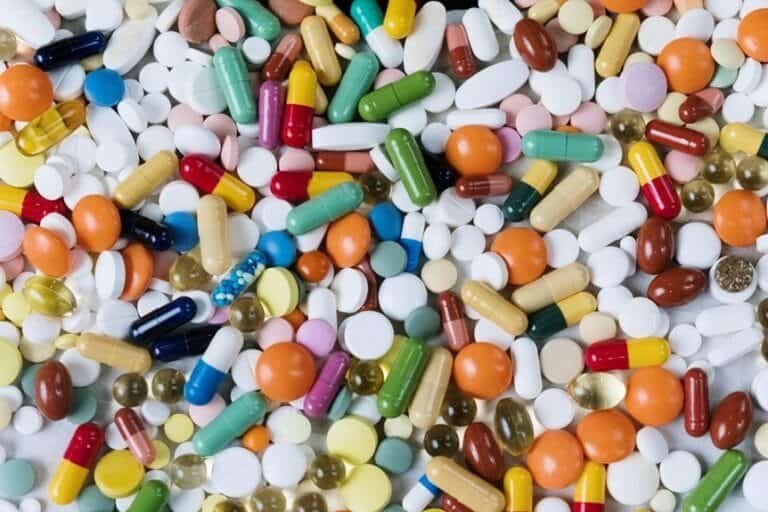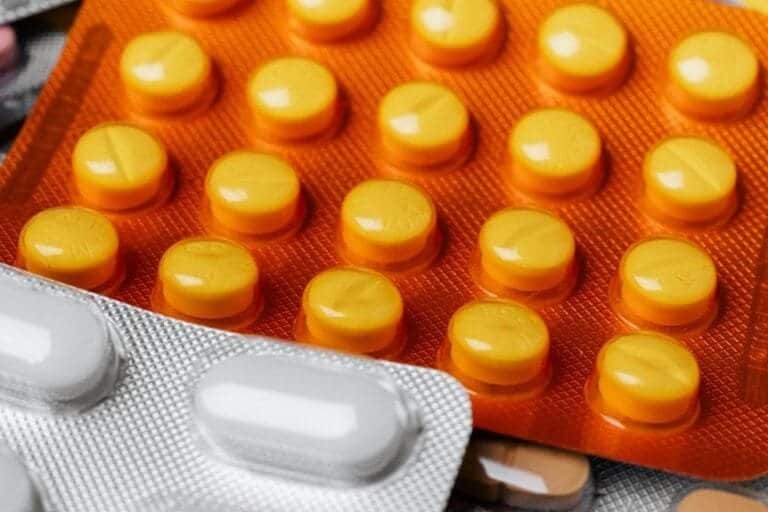When comparing Sermorelin and HGH, your decision hinges on effectiveness and safety. Sermorelin actively stimulates the body's natural growth hormone production, providing gradual, long-term benefits with fewer risks. HGH, while delivering faster results, poses significant side effects and may lead to dependency. Ultimately, your choice should align with your health objectives, balancing immediate gains against long-term sustainability. To further explore the nuances of each therapy, their specific benefits, and risks, you'll find valuable insights ahead.
Key Takeaways
- Mechanism of Action: Sermorelin stimulates natural growth hormone release, while HGH directly activates receptors for immediate effects.
- Performance Timelines: Sermorelin shows gradual improvements over 3 to 6 months, whereas HGH delivers quicker results in a matter of weeks.
- Safety Profiles: Sermorelin has milder side effects and lower long-term risks, while HGH can cause severe complications including joint pain and insulin resistance.
- Long-Term Impact: Sermorelin promotes sustainable hormone production without dependency, unlike HGH, which may lead to ongoing supplementation needs.
- Therapeutic Benefits: Both enhance muscle mass and cognitive function, but Sermorelin does so with fewer side effects and supports overall hormonal health.
Understanding Sermorelin's Mechanism of Action

Understanding Sermorelin's mechanism of action is essential for grasping its role in stimulating growth hormone release.
Sermorelin acts as a synthetic analogue of growth hormone-releasing hormone (GHRH), effectively binding to GHRH receptors in the pituitary gland. This binding mimics natural GHRH, triggering the release of endogenous growth hormone.
By stimulating the body's own production of growth hormone, Sermorelin preserves the natural pulsatile secretion patterns while regulating its effects through negative feedback mechanisms involving somatostatin. Such regulation mitigates the risks of sustained elevated hormone levels commonly associated with exogenous HGH. Furthermore, this mechanism may help in avoiding the risks of tachyphylaxis, which can occur with HGH use. As a result, Sermorelin is considered an effective natural solution for combating signs of aging.
Consequently, the Sermorelin effects extend beyond mere elevation in growth hormone levels, enhancing overall pituitary function and offering a safer, more physiological approach to growth hormone therapy. Additionally, research suggests that Sermorelin's potential benefits for adults may include improved pituitary function, further supporting its therapeutic use in growth hormone replacement therapy.
How HGH Therapy Works
Sermorelin's role in stimulating endogenous growth hormone production sets the stage for understanding how HGH therapy operates. HGH is administered via subcutaneous HGH injection techniques, mimicking natural release patterns.
Upon entry, HGH binds to the human growth hormone receptor, triggering receptor dimerization. This interaction activates the JAK-STAT signaling cascade, which facilitates gene transcription and promotes the synthesis of IGF-1, a vital mediator of growth.
Consequently, the physiological effects manifest as enhanced linear growth, increased muscle mass, improved bone density, and altered metabolism. Significantly, HGH's impact extends to lipid profiles and glucose metabolism, where insulin resistance may occur.
Understanding these mechanisms is essential when considering HGH's therapeutic implications for growth disorders and adult deficiencies.
Performance Timeline: Sermorelin Vs HGH

While both Sermorelin and HGH are used to enhance growth hormone levels, their performance timelines differ markedly due to their mechanisms of action. Sermorelin promotes natural HGH production, resulting in gradual improvements over a 3 to 6-month treatment timeline. In contrast, HGH delivers quicker results, often noticeable within weeks, especially at higher doses.
| Treatment | Performance Timeline |
|---|---|
| Sermorelin | 3-6 months |
| HGH | Weeks |
| Peak GH Amplitude | Gradual |
| Sustained Support | Long-term |
Understanding these performance metrics allows you to align your health goals with the most effective therapy, whether you seek immediate results or prefer sustainable, natural hormone enhancement.
Safety Profiles and Side Effects Comparison
When considering safety profiles and side effects, Sermorelin tends to present milder reactions compared to HGH, which can lead to more severe complications.
You should be aware that Sermorelin stimulates hormone production naturally, while HGH supplementation may cause supraphysiological effects over time.
Regular monitoring is essential for both therapies to mitigate risks and guarantee safe treatment.
Sermorelin Side Effects
Understanding the side effects of sermorelin is essential for ensuring patient safety and optimizing treatment outcomes. Common symptoms include mild injection site reactions, headaches, and gastrointestinal disturbances, which usually resolve quickly.
However, be vigilant for serious reactions, such as allergic responses, cardiovascular complications, or hormonal imbalances. Regular monitoring becomes vital to manage these potential side effects effectively. Severe reactions like hives or swelling require immediate medical attention to prevent complications.
Additionally, sermorelin interacts with certain medications, necessitating careful assessment before treatment initiation. While sermorelin maintains a favorable safety profile compared to HGH, contraindications such as untreated hypothyroidism and pregnancy must be considered.
Ultimately, consistent oversight and adjustment based on side effects are fundamental to successful therapy.
HGH Side Effects
Human Growth Hormone (HGH) therapy presents a complex safety profile, marked by a variety of potential side effects that can impact both short-term and long-term health.
Common HGH side effects include nerve, muscle, or joint pain due to fluid retention and metabolic alterations. You may experience swelling of extremities, high cholesterol levels, or even carpal tunnel syndrome.
Serious HGH risks involve the development of acromegaly, enlarged heart, and potential diabetes from induced insulin resistance. Mood changes, fatigue, and increased heart disease risk further complicate the therapeutic landscape.
Regular monitoring of blood sugar, cardiac status, and liver function is crucial to mitigate these HGH risks and guarantee patient safety.
Long-Term Safety Considerations
While evaluating long-term safety considerations, it's essential to compare the safety profiles of Sermorelin and HGH therapy.
Sermorelin's natural mechanism promotes safe growth hormone production, minimizing risks of hormone imbalances compared to direct HGH use. Key safety considerations include:
- Long-term monitoring: Regular blood tests are essential to adjust dosing and track hormone levels effectively.
- Side effects: Sermorelin exhibits milder adverse effects, while HGH can lead to severe conditions like acromegaly.
- Regulatory position: Sermorelin has fewer restrictions, allowing for easier access and oversight.
Ultimately, when considering longevity in therapy, Sermorelin offers a safer profile with lower long-term risks, necessitating fewer dosing adjustments and demonstrating a broader safety margin.
Therapeutic Benefits of Sermorelin
Sermorelin therapy offers significant benefits for muscle mass enhancement and cognitive function improvement.
By stimulating natural growth hormone production, it aids in building muscle strength and accelerating recovery post-exercise.
Additionally, enhanced cognitive function leads to better mental clarity and overall well-being, making it a valuable option for those seeking holistic health benefits.
Muscle Mass Enhancement
When considering muscle mass enhancement, the therapeutic benefits of Sermorelin stand out due to its ability to stimulate natural growth hormone production. This peptide encourages greater muscle recovery and improved strength training outcomes without the risks associated with direct HGH supplementation.
Key advantages include:
- Increased Muscle Mass: Enhanced GH levels lead to noticeable muscle growth, ideal for strength training enthusiasts.
- Natural Stimulation: By stimulating your pituitary gland, Sermorelin promotes GH production, minimizing the risk of suppressing natural hormone levels.
- Faster Recovery: Improved recovery times allow for more frequent and intense training sessions, essential for building muscle.
As you explore options for muscle mass enhancement, Sermorelin presents a balanced, effective alternative that prioritizes natural hormonal health while optimizing physical performance.
Cognitive Function Improvement
As cognitive function declines with age or injury, the potential benefits of Sermorelin in enhancing mental acuity become increasingly relevant.
By stimulating the pituitary gland, Sermorelin promotes natural growth hormone release, aligning with cognitive enhancement strategies aimed at improving brain function. Research suggests it may bolster memory and cognitive performance in older adults, offering a viable alternative to traditional HGH therapy, which can suppress natural hormone production.
With minimal side effects, Sermorelin serves as a safer option among brain health supplements.
Although further investigation is needed, its ability to support the neuroendocrine axis and foster mental clarity positions it as a promising candidate in the field of cognitive improvement therapies.
Advantages of HGH Usage

Particularly, the advantages of Human Growth Hormone (HGH) usage extend beyond mere aesthetic improvements, offering significant therapeutic benefits as well.
Leveraging HGH can manifest in various ways:
- Enhanced Muscle Recovery: HGH accelerates tissue repair, promoting faster recovery post-exercise and reducing downtime.
- Improved Fat Metabolism: It actively stimulates lipolysis, aiding in fat loss and improving body composition, crucial for those seeking fitness optimization.
- Cognitive Enhancement: HGH has demonstrated potential in elevating cognitive function and mood, which can enhance focus and mental clarity.
These HGH benefits together underscore its role not only in cosmetic improvements but in hormone therapy, importantly for anti-aging effects and bolstering sports performance, ultimately contributing to overall health and wellness.
Considerations for Specific Health Conditions
While both Sermorelin and HGH therapies offer compelling benefits, their application varies considerably based on individual health conditions.
In therapeutic scenarios involving Growth Hormone Deficiency, Sermorelin's mechanism of stimulating natural GH production provides a safer, gradual alternative that aligns with the body's rhythm.
For age-related symptoms, your choice might lean towards Sermorelin for its fewer side effects and natural outcomes.
In muscle recovery contexts, HGH accelerates gains, while Sermorelin enhances endurance through natural stimulation.
In metabolic conditions, Sermorelin potentially mitigates insulin resistance compared to HGH, making it a more suitable option for some.
Consequently, tailored, personalized approaches to treatment should be guided by your specific health goals and conditions, ensuring ideal outcomes.
Long-Term Sustainability of Treatment Options

Understanding the long-term sustainability of growth hormone therapies is essential for patients considering Sermorelin or HGH. Each treatment's approach impacts your ongoing health and wellness.
Here are three key considerations:
- Natural Stimulation: Sermorelin supports your body's natural hormone production, potentially offering prolonged sustainability with fewer risks.
- Dependency Risks: HGH may necessitate ongoing supplementation, potentially leading to suppression of natural production and higher long-term dependency.
- Patient Testimonials: Many patients report sustained benefits from Sermorelin, indicating a preference for its gradual approach as it aligns with long-term goals.
As future research evolves, both therapies will need to be assessed continuously to enhance understanding and guide patient choices effectively.
Personalized Therapy: Choosing the Right Approach
Selecting the right growth hormone therapy involves aligning treatment options with individual health goals and physiological needs.
To achieve personalized goals, you must consider the unique mechanisms of Sermorelin and HGH. Sermorelin promotes natural growth hormone production, aligning with your body's hormonal balance and preserving regulatory mechanisms. In contrast, HGH delivers rapid results but may suppress natural production, leading to dependency.
Therapy customization should weigh your immediate medical needs against long-term sustainability. For those seeking gradual, sustained benefits, Sermorelin may be preferable, enhancing muscle growth while improving sleep quality.
Conversely, if rapid improvements are essential, HGH may be the choice, despite its higher risk of side effects. Prioritize regular monitoring and professional guidance for ideal outcomes.
Frequently Asked Questions
How Are Sermorelin and HGH Administered?
Sermorelin's administered via subcutaneous injections at specific sites, usually daily, with dosage variations between 0.2 to 0.3 mcg. HGH, on the other hand, is similarly injected, tailored based on individual health needs and monitored closely.
What Are the Costs Associated With Sermorelin and HGH?
When evaluating costs, Sermorelin pricing typically ranges from $200 to $400 monthly, while HGH expenses soar between $1,000 and $3,000. You must consider dosage influences and additional healthcare fees impacting overall treatment expenses.
Can Sermorelin and HGH Be Used Together?
You can consider using Sermorelin and HGH together under medical supervision, as Sermorelin benefits include gradual hormone enhancement while HGH effects provide immediate boosts. However, combining them poses risks needing careful management of potential side effects.
How Do Insurance Policies Cover These Treatments?
Insurance coverage for sermorelin and HGH treatments depends on treatment eligibility determined by medical necessity. Policies often vary widely, emphasizing the importance of thorough documentation to justify these therapies for approved medical conditions.
What Lifestyle Changes Should Accompany Therapy?
To enhance therapeutic outcomes, you should embrace prudent dietary adjustments and engage in targeted exercise recommendations. These lifestyle modifications optimize hormonal balance, fostering a more effective environment for your treatment while promoting overall well-being.
Conclusion
In choosing between sermorelin and HGH, it's crucial to weigh their distinct mechanisms, benefits, and safety profiles. Like selecting the right tool for a specific task, your health conditions and goals should guide your decision. Sermorelin offers a more natural approach with a focus on stimulating your body's growth hormone production, while HGH delivers immediate effects. Ultimately, personalized therapy guarantees you find the most effective and sustainable option tailored to your needs. Choose wisely for best results.
References
- https://www.tryeden.com/post/sermorelin-vs-hgh-comparison
- https://pmc.ncbi.nlm.nih.gov/articles/PMC7108996/
- https://kentonbruicemd.com/hgh-therapy-and-sermorelin-what-is-the-difference/
- https://pmc.ncbi.nlm.nih.gov/articles/PMC2685278/
- https://www.invigormedical.com/anti-aging/4-fundamental-reasons-to-choose-sermorelin-over-hgh-for-anti-aging/
- https://en.wikipedia.org/wiki/Sermorelin
- https://hydramed.com/blog/history-of-sermorelin-from-discovery-to-therapeutic-use
- https://www.peptides.org/sermorelin-vs-hgh/
- https://pmc.ncbi.nlm.nih.gov/articles/PMC2699646/
- https://go.drugbank.com/drugs/DB00052






